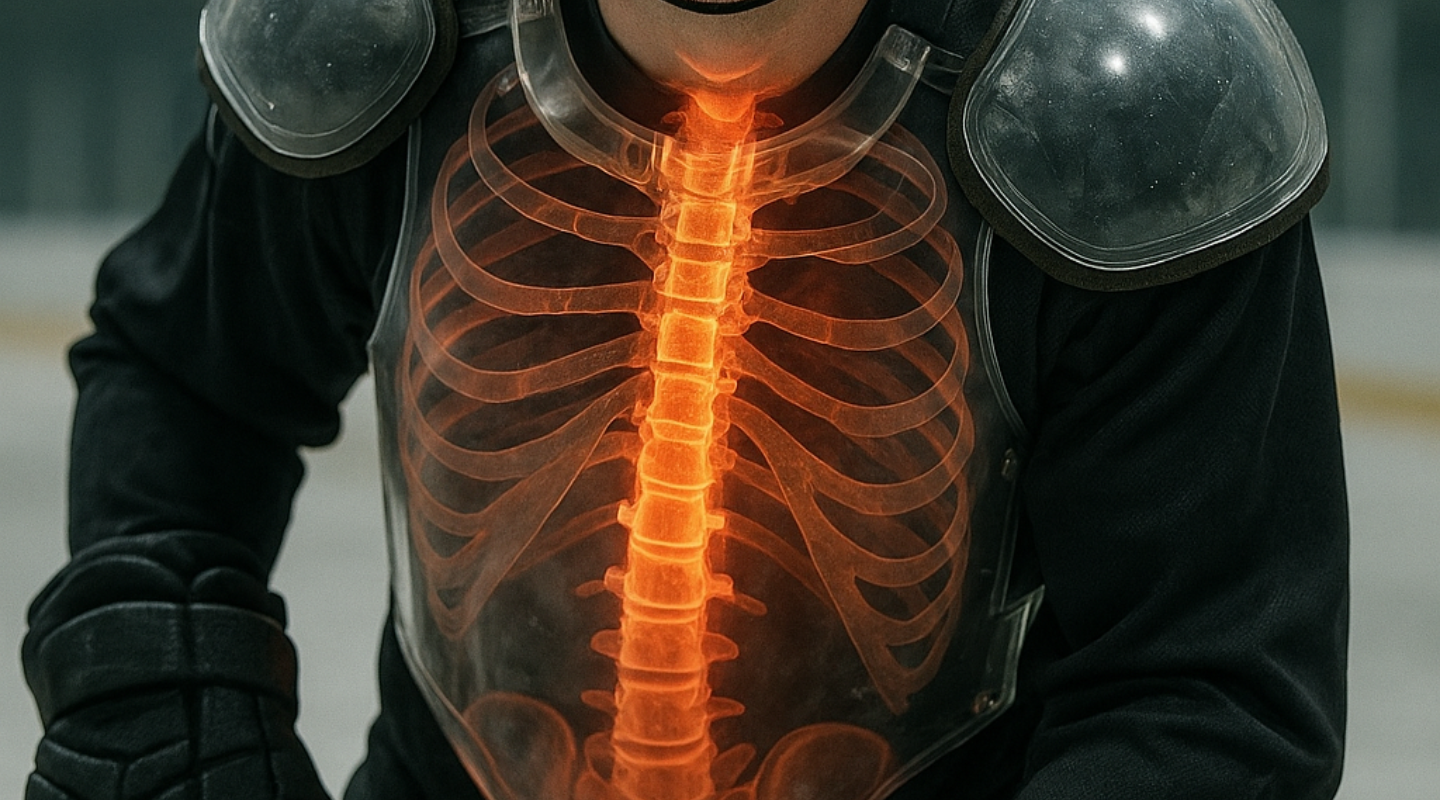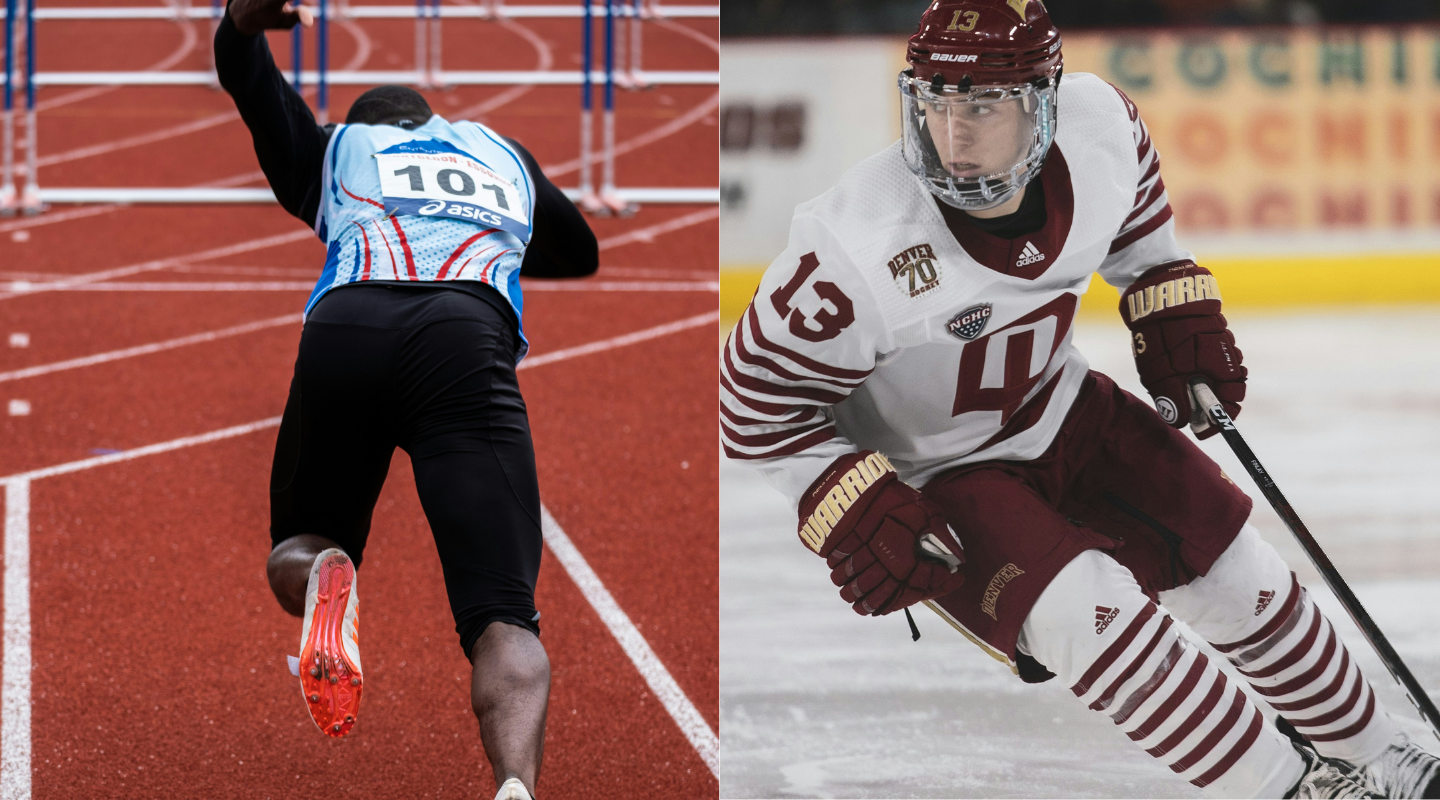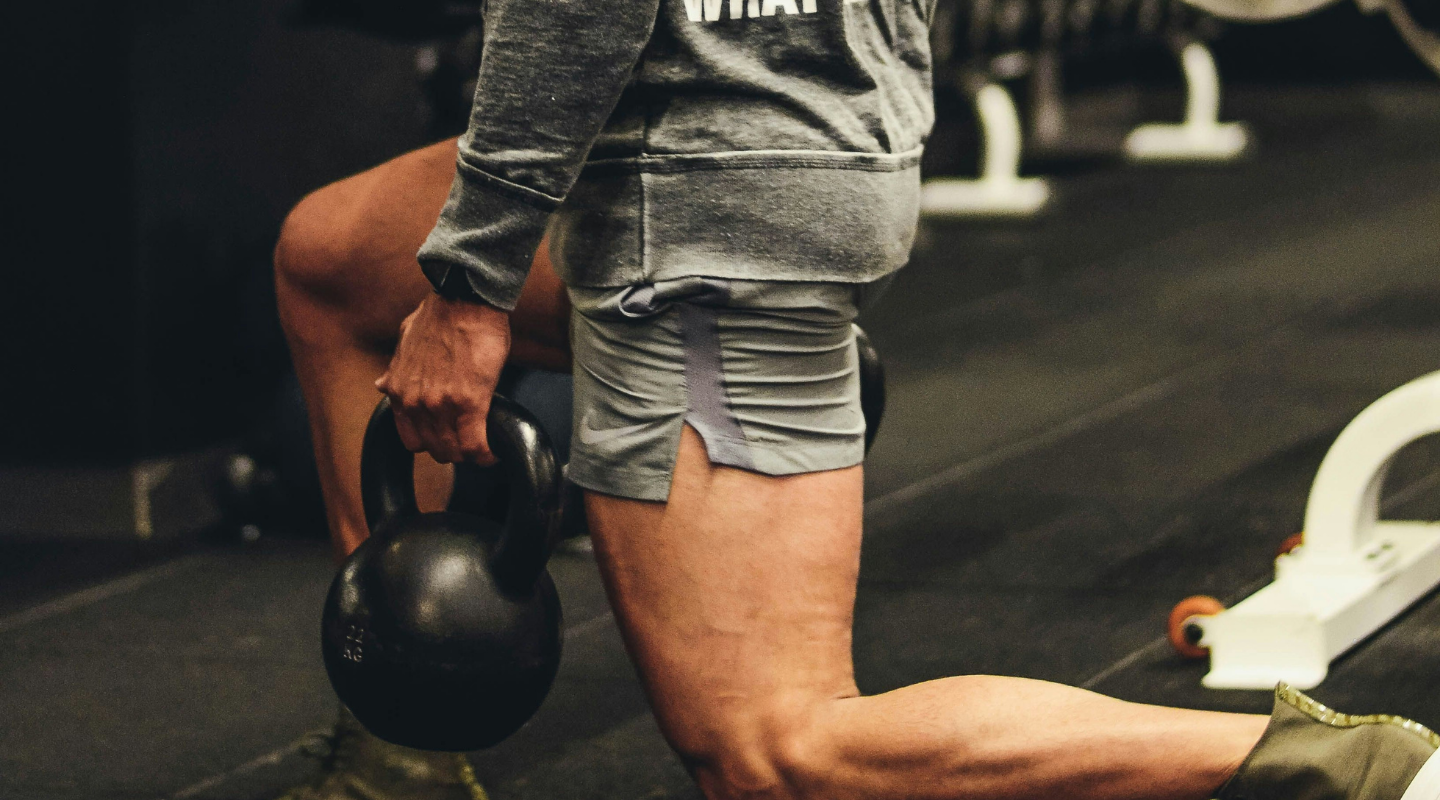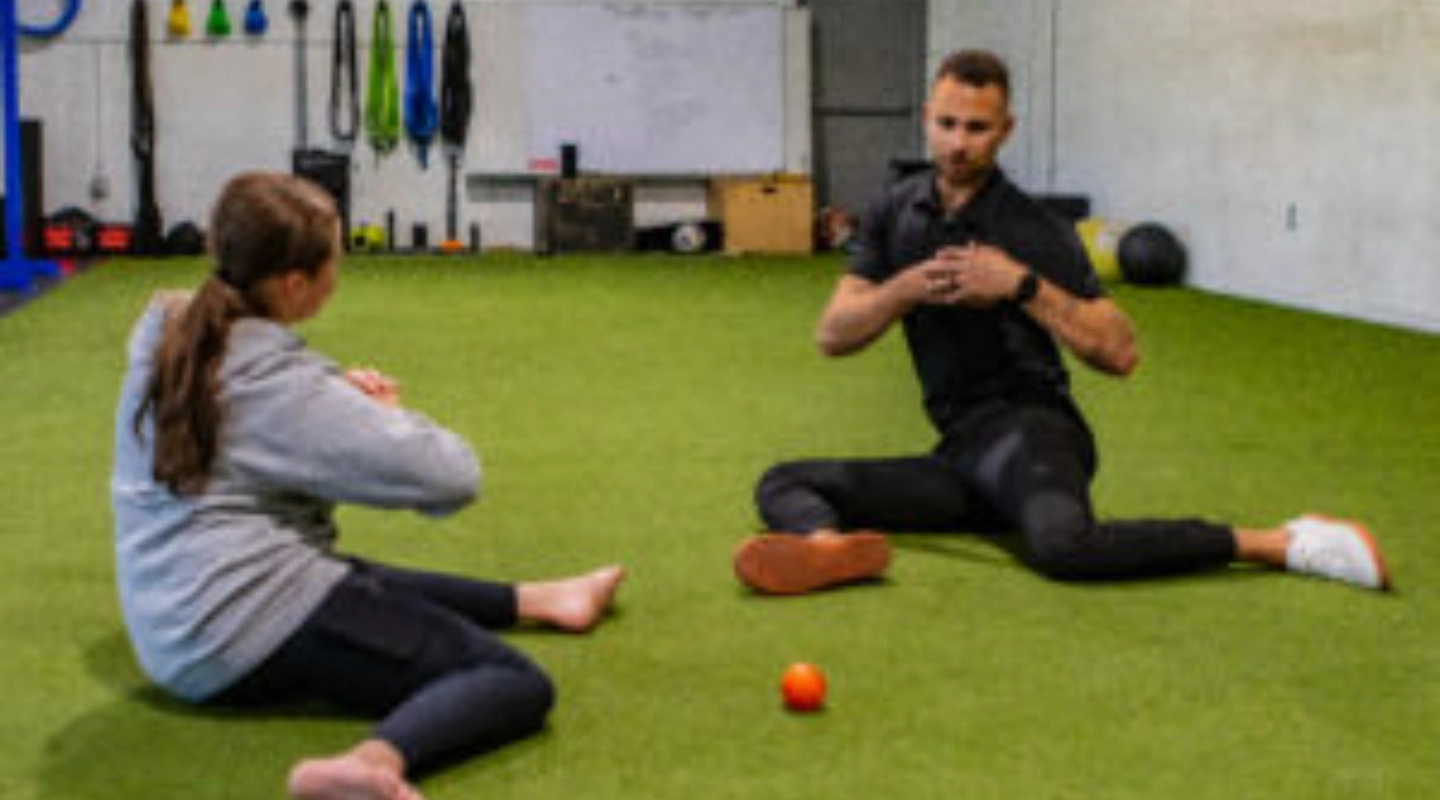
Thoracic Spine Mobility for Hockey Players: Unlock Power, Posture, and Injury Prevention
Why Upper-Back Mobility Matters in Hockey
As a former professional hockey player turned Doctor of Physical Therapy, I’ve learned one crucial lesson: a flexible upper back changes the game. The thoracic spine (T1–T12) drives trunk rotation, extension, and efficient breathing—key for harder shots, better balance, and safer contact. At Ghost Rehab & Performance in Grand Rapids/Byron Center, MI, we see how unlocking the upper back boosts performance while lowering injury risk.
What the Thoracic Spine Is (and What It Does)
- Middle segment of the spine attaching to the ribs (T1–T12).
- Provides the majority of trunk rotation and contributes to extension for posture and breathing.
- In hockey, it’s a primary link in the kinetic chain for shooting, checking, and agile skating.
Why Hockey Players Get Stiff Up Top
- On-ice position: Prolonged forward-flexed “hockey posture” fosters thoracic kyphosis.
- Muscle imbalance: Tight pecs + undertrained mid-back → rounded shoulders (“upper crossed” posture).
- Lifestyle: School/desk/gaming time reinforces flexed posture.
- Gear & repetition: Slight motion limits + thousands of similar reps tighten ranges over time.
Performance Costs of a Stiff Thoracic Spine
- Shot power & accuracy: Limited trunk rotation = less torque; compensations strain wrists, shoulders, and low back.
- Skating posture & speed: Collapsed upper back shortens stride, reduces balance and vision; hampers counter-rotation.
- Goalies: Restricted extension/rotation slows recoveries and increases lumbar strain.
Injury Links: Upper Back, Shoulders, and Low Back
- Shoulder risk: Rounded posture alters scapular mechanics → impingement risk and poor force absorption on contact.
- Low back pain: If T-spine won’t rotate/extend, the lumbar spine over-rotates to “make up the difference,” driving irritation.
Quick Self-Screens
- Seated Rotation Test: Arms across chest or stick on shoulders; aim ~45° rotation each way without hip cheat.
- Wall Angels: Arms/wrists and upper back against wall; loss indicates limited extension/pec tightness.
- Foam-roller extension: Gentle segmental extension over roller; hard stop = stiffness.
- Hunched vs. Tall Rotation: Compare rotation slouched vs. tall—big difference = T-spine limiter.
Hockey-Focused Thoracic Mobility Exercises
Perform pain-free, 4–6 days/week as micro-doses (5–10 min).
- Quadruped T-Spine Rotations (5–8/side)
- Open Book (Side-Lying 90/90) (6–10/side)
- Foam-Roller Thoracic Extensions (60–120 sec total)
- Segmented Cat-Cow (10 slow cycles focusing mid-back)
- Standing/ Half-Kneeling Wall Rotations (6–8/side)
Progression tips: Add band-resisted rotations; pair with rowing/Y-T-W for scapular control; finish with stick mechanics, med-ball rotational throws, or cable chops to “own” new range.
When to Work with a Sports PT (and Why It Accelerates Results)
- Hockey-specific assessment: Pinpoint root causes (joint vs. soft tissue vs. control).
- Individualized plan: Position-specific (goalie vs. forward), season-aware, criteria-based progressions.
- Manual therapy + coaching: Joint mobilization, soft-tissue work, neuromuscular re-ed, and on-ice transfer.
- Fast access, real outcomes: Direct access in MI; stay in-season while fixing the limiter.
In Grand Rapids/West Michigan, Ghost Rehab & Performance blends pro-hockey insight with evidence-based PT to turn mobility gains into on-ice performance.
References
- Neeld K. Does Your Shot Feel Off? It Might Be Your Upper Back. KevinNeeld.com. https://www.kevinneeld.com/does-your-shot-feel-off-it-might-be-your-upper-back/. Published July 2, 2019.
- Hibbs AE, Thompson KG, French DN, Wrigley A, Spears IR. Optimizing performance by improving core stability and core strength. Sports Med. 2008;38(12):995-1008. doi:10.2165/00007256-200838120-00004
- Borstad JD, Ludewig PM. The effect of long duration stretching on muscle extensibility and joint passive stiffness. Eur J Appl Physiol. 2005;94(5-6):546-551. doi:10.1007/s00421-005-1344-3
- Tyler TF, Zook LA, Brittis DA, Gleim GW. Clinical and biomechanical evidence of altered hip mechanics in athletes with labral pathology. Am J Sports Med. 2006;34(3):405-410. doi:10.1177/0363546505280423
- Evans K, Refshauge KM, Adams R. Predictors of low back pain in young elite golfers: a preliminary study. Phys Ther Sport. 2008;9(4):166-172. doi:10.1016/j.ptsp.2008.07.001
- Laudner KG, Moline MT, Meister K. The relationship between forward scapular posture and posterior shoulder tightness among baseball and softball players. Am J Sports Med. 2013;41(11):2635-2639. doi:10.1177/0363546513496548
- McGill SM. Low Back Disorders: Evidence-Based Prevention and Rehabilitation. 3rd ed. Human Kinetics; 2015.
- Ludewig PM, Cook TM. Alterations in shoulder kinematics and associated muscle activity in people with symptoms of shoulder impingement. Phys Ther. 2000;80(3):276-291. doi:10.1093/ptj/80.3.276
- Willardson JM. Core stability training: applications to sports conditioning programs. J Strength Cond Res. 2007;21(3):979-985. doi:10.1519/R-20285.1
.png)




